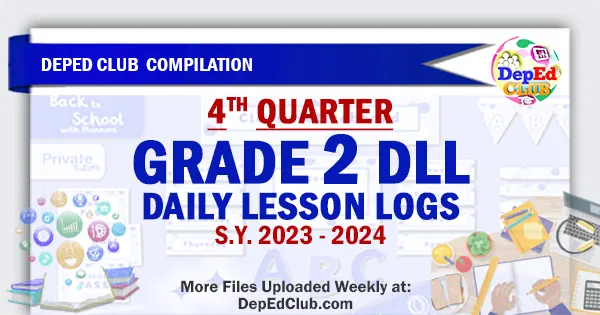To help teachers enhance the quality and adapt to the changing landscape of education thus ensuring continuous improvement and innovation, we are constantly uploading our ready-made Week 4 – Quarter 4 Grade 2 Daily Lesson Log | April 22 – 26, 2024 DLL. Our long-term goal is to consistently update and publish our ready-made weekly Grade 2 Daily Lesson Logs. Just visit this page regularly for the latest uploads.
We are grateful to all of our Contributors, File Editors and Tech Volunteers who worked sacrificially and without hesitation to manage the content of our website and social media accounts. Thank you to everyone for your continued support.
Internal and External Evaluation for Innovation
Research suggests that effective school development and innovation thrive through a dynamic interplay between internal and external quality assurance mechanisms. Combining internal and external evaluation and feedback is crucial, especially in diverse educational environments like blended learning. To ensure effective quality assurance for school development, it’s essential to foster ownership through meaningful dialogue and actions, encourage creative thinking and prioritize improvement over mere quality control.
Guidelines for quality assurance in distance and e-learning remain relevant and beneficial. These guidelines encompass various considerations and indicators for both external and internal evaluation of processes and programs. External quality assurance, similar to traditional school-based provision acknowledges each institution’s unique characteristics including those specific to e-learning. Typically, this involves engaging relevant stakeholders at all levels and assessing aspects such as teaching and learning processes, learning resources, virtual learning environments and student support systems.
Institutions can showcase their commitment to pedagogical innovation projects by involving stakeholders including students and teaching staff in methodology design. Adapted quality assurance processes can effectively support a blend of in-school and distance learning across five key areas:
- Evaluation of Teaching and Learning: Assessing teaching and learning activities outside of school including assessment methods and integrating feedback from both in-school and distance settings.
- Evaluation of School Climate/Culture: Gauging the sense of community, identity, well-being of students and teachers and relationships with stakeholders from both in-school and distance perspectives.
- Management of Staff Resources: Ensuring effective management of staff resources across both distance and in-school teaching environments.
- Monitoring Practices and Developments: Keeping abreast of practices and innovations in the education system, considering both distance and in-school learning approaches.
- Incorporating Feedback from External Providers: Managing and integrating evaluation and feedback from external providers such as broadcast media or private organizations.
By embracing these recommendations and fostering a mutual relationship between internal and external evaluation, schools can effectively navigate the complexities of modern education, driving innovation and continuous improvement.

